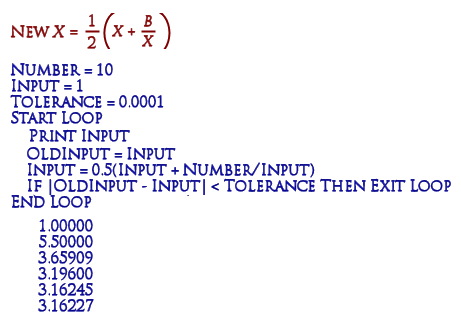Ockham’s razor often expressed in Latin as the lex parsimoniae, translating to law of parsimony, law of economy or law of succinctness, is a principle that generally recommends selecting the competing hypothesis that makes the fewest new assumptions, when the hypotheses are equal in other respects…
![]()
Alternative futures for the DSM revision process: iteration v. paradigm shift
by Kenneth Kendler, MD [The Virginia Institute of Psychiatric and Behavioral Genetics…] and Michael First, MD [Biometrics Research Department, New York State Psychiatric Institute…]
The British Journal of Psychiatry [2010] 197: 263-265.
ABSTRACTTwo major approaches can be used for the up-coming revisions of DSM–V and ICD–10: an ‘iterative model’ in which incremental changes are made or a ‘paradigm shift model’ in which the existing approach is jettisoned in favour of a new nosological model. We explore each of these two approaches and conclude that although they both have strengths and limitations, our field is not currently ready for a paradigmThe two major psychiatric classification systems, the American Psychiatric Association’s DSM–IV and the World Health Organization’s ICD–10, are being revised for the first time since the 1990s. Both researchers and clinicians have expressed frustration with the approach taken by DSM–IV and ICD–10 where disorders are made up of diagnostic categories defined descriptively in terms of symptoms that have been observed to covary in individuals, supplemented by optional severity dimensions (mild, moderate and severe) and one cross-cutting dimension for assessment of functioning (i.e. the Global Assessment of Functioning on Axis V). In adopting this approach, DSM–III assumed that, as in general medicine, the phenomenon of symptom covariation was an indication that their presentation could be explained by a common underlying aetiology and pathophysiology and that, over time, these aetiological factors would be elucidated. Unfortunately, in the 30 years that has elapsed since the publication of DSM–III, the goal of clarifying this pathophysiology has remained elusive. Despite the discovery of many initially promising candidates over the years, no laboratory marker has been shown to be diagnostically useful for making any DSM diagnosis. Other evidence suggesting that the current classification lacks validity include: high rates of diagnostic comorbidity; lack of treatment specificity for the diagnostic categories; evidence that distinct syndromes share a genetic basis; and the high rates of individuals requiring the use of the diagnostically unspecific not otherwise specified (NOS) category. Some investigators have also raised concerns that continued use of the current diagnostic paradigm might impede future research efforts.
There are two different methods for revising our psychiatric nosology: the ‘iterative model’, in which incremental changes are made while retaining the fundamental assumptions of the existing model; or the ‘paradigm shift model’, where the underlying paradigm is discarded in favour of a fundamentally new approach. We explore these two approaches, provide some examples of how each model might work and conclude by noting that despite the well-recognised limitations with our current paradigm, our field is not yet ready for an entirely new paradigm.
The iterative model assumes that using increasingly rigorous empirical methods, each subsequent revision of our diagnostic system will produce improvements over its predecessor. Over time, this process will slowly move our nosology from the rough constructs we now call ‘disorders’ towards a better and better approximation of the ‘true’ psychiatric diseases as they exist in nature. The iterative model is evolutionary and cumulative in nature. The architects of DSM–III–R and DSM–IV implicitly utilised this approach. For example, the introduction of DSM–III–R begins with:
‘This is the revision of the third edition of the APA’s DSM, better known as DSM–III–R. The last sentence of the introduction to DSM–III, published in 1980, stated "DSM–III is only one still frame in the ongoing process of attempting to better understand mental disorders." DSM–III–R represents another still frame.’


If there’s any evidence that the revision process of the DSMs is always getting us closer to "the truth," I sure don’t know what it is. Looks like it’s growing like the Federal Tax Code to me.
| edition | year | pages | diagnoses |
| DSM | 1952 | 130 | 106 |
| DSM-II | 1968 | 134 | 182 |
| DSM-III | 1980 | 494 | 265 |
| DSM-III-R | 1988 | 567 | 292 |
| DSM-IV | 1994 | 886 | 297 |
| DSM-IV-TR* | 2000 | 943 | – |
| * also four volumes of sourcebooks… | |||
We’re getting close!
| edition | year | pages | |
| ICD-9* | 2009 | 1184 | |
| * diagnostic codes for all of medicine… | |||
The DSM–IV revision strategy, which called for making changes only if there was sufficient evidence to justify such a change, also implicitly followed this iterative model.The main advantage of the iterative model is its conservativeness. It limits the rate of nosological change, allowing each transition, from one iteration of the classification to the next, to be straightforward thereby minimizing disruption to clinical practice and research. Furthermore, if each iteration of the nosology succeeds in more closely approximating the true nature of psychiatric disorders, this model would produce a steady improvement in the validity of the diagnostic system…
Moreover, the iterative model assumes continuity over time in our approach towards validating psychiatric disorders. The model works only if the methods used to determine validity remain consistent. What happens if dramatic technical breakthroughs in genetics, imaging, or neuroscience cast the problems of psychiatric nosology in an entirely new light? The application of such new methods to our nosology would likely disrupt the smooth evolutionary approach of the iterative model.
 We dramatically changed the DSM in 1980 but we can’t change the DSM now because it would cause too much drama? And the last one is a whopper approximating pseudologia fantastica [compulsive lying]. In the unlikely possibility that someone should make their dreamed of "dramatic technical breakthroughs in genetics, imaging, or neuroscience," they’d be doing cartwheels all the way to the publisher with the DSMN+1 plenty pronto. If there’s a scientific principle involved in this process, it’s not iteration, it’s inertia. The DSM seems to have become disconnected from its raison d’être and developed a life of its own with its own canonized mythology and bureaucracy. William of Ockham, where were you when we needed you?…
We dramatically changed the DSM in 1980 but we can’t change the DSM now because it would cause too much drama? And the last one is a whopper approximating pseudologia fantastica [compulsive lying]. In the unlikely possibility that someone should make their dreamed of "dramatic technical breakthroughs in genetics, imaging, or neuroscience," they’d be doing cartwheels all the way to the publisher with the DSMN+1 plenty pronto. If there’s a scientific principle involved in this process, it’s not iteration, it’s inertia. The DSM seems to have become disconnected from its raison d’être and developed a life of its own with its own canonized mythology and bureaucracy. William of Ockham, where were you when we needed you?…
Kendler and First declared “What happens if dramatic technical breakthroughs in genetics, imaging or neuroscience cast the problems of psychiatric nosology in an entirely new light? The application of such new methods to our nosology would likely disrupt the smooth evolutionary approach of the iterative model.â€
My first reaction is that disruption of the smooth evolution of a failed model is no cause for regret or hesitation. My second reaction is that the failed model is still doing an excellent job, directly and indirectly, of retarding the very breakthroughs that might undo it.
This is like the debate between astrology and astronomy, arguing that if only the “iterative model” were used, astrology could evolve into astronomy. A paradigm shift occurring in the 16th century, of course, ditched astrology. All the major categories of DSM, including “major depression,” “bipolar disorder” (with the assumption that depression can be classified by polarity), and “schizophrenia” are so corrupt, that both baby and bath water must be thrown out.
As Dr. Carroll has mentioned, the changes in 1980 weren’t really a paradigm shift in the first place. They expelled a tired paradigm but built the new ‘faux paradigm’ on the possibility of ‘as yet unrealized’ discoveries to confirm what they wished to be true. Now they’re suggesting that another round with an unrevised DSM might give them some more time to make their long overdue discoveries. Problem is, they aren’t looking. They’re too busy trying to find a way to beef up the waning allure of their aging drugs. If it didn’t matter so much, it would be laughable. As it is, it’s like some disillusioning existential novel that ends as gloomily as it started.